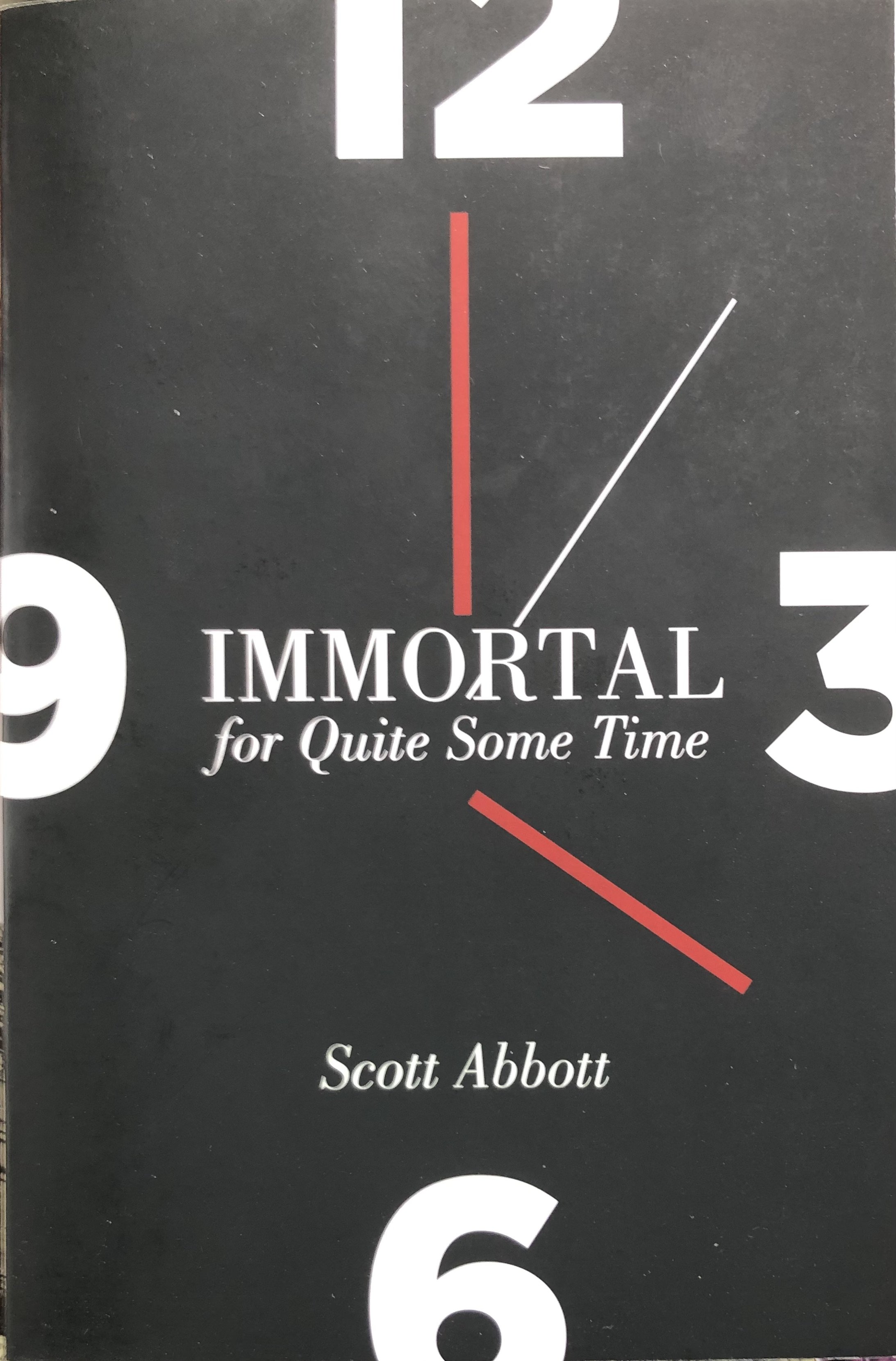While neither of the authors is a philosopher (Rushforth is a botanist, Abbott a literary critic), in the course of peripatetic conversations they both turn to philosophy (as they do to poetry and art and science) for answers and for good questions.
Chapter titles are one indication of the topics under discussion: This is True Worship, Ecstatic Phenomenon, Jesus is the Answer, As Common as Paradox, As Odd as Love, Transcendental Balance, God Stories.
Epistemology is a constant concern:
“You’ve stumbled onto something controversial and interesting here,” Sam says. “It’s a classic disagreement between the lumpers (me included) and the splitters. Your second guide [with a larger number of species] was written by splitters and your first by lumpers.”
“I bought those guides,” I tell Sam, “expecting scientific facts. Instead, I get judgments, assessments, interpretations built on biases. ‘Truth,’ Nietzsche wrote, ‘is a mobile army of metaphors.’ I’m fifty years old and have known this for decades. Now I know it again.”
Human interaction with nature is a related question:
Sam’s standing form, silhouetted against the valley below, reminds me of early nineteenth-century paintings by Caspar David Friedrich. Responding to the new sense among German Romantics for the importance of the subject as it relates to objects of perception, Friedrich painted human figures from behind, their gazes turned to nature. “Nature,” Friedrich’s contemporary Schelling wrote, “is visible spirit, spirit is invisible nature.”
There are questions of aesthetics:“
Getting dark. Mountain hanging over us. Wind whipping up. We’re insignificant here.” “Sam, I don’t want to put words between us and the experience, but your response bears out Kant’s theory of the sublime. Nature overwhelms us with sheer size or power, then reason moves us past fear to a fine mixed pleasure.”“No shit,” Sam agrees thoughtfully.
Theology haunts the authors, although neither is a believer:
“Stanley Hauerwas claims that only ‘god stories’ have the power to inspire commitment, only stories that start ‘In the beginning...’ I pressed him on the issue, claiming that plenty of atheists with no belief in any sort of divine creation live strongly committed lives.”
“What did he answer?” Sam yells back from high on the hill.
“He’s a hell of a smart guy,” I answer, “so I’m not sure exactly what he said. I think I partly misunderstood his original point, and I think he said that like you and me, he sees human existence as absolutely contingent. But that god stuff confused the issue for me. I think he underestimates the commitment potential of stories that end with death!”
In short, as the authors converse about family and friendship and wilderness and loss and botany and mountain bikes and aging and sex and meaning, they have no recourse but to turn to philosophy now and then.
My brother John died of AIDS in 1991 at the age of forty. The most surprising thing I learned as I began to write about him was that you can’t describe your brother without describing yourself. And that can be uncomfortable, especially if you are a heterosexual, practicing Mormon.
Immortal For Quite Some Time is a work of what I call “fraternal meditation.” The book shares the fragmented structure of Peter Handke’s A Sorrow Beyond Dreams, a self-conscious struggle to write about his mother after her suicide, and of Susan Griffin’s remarkable investigation into the violent public and private consequences of silence, A Chorus of Stones. In fits and starts I sketch my versions of a lonely, funny, talented, hard-luck, bisexual, ex-Mormon and his ostensibly more stable brother. The former has no choice but to suffer this outing at the hands of his brother. And the latter, although he can choose what he discloses about himself, risks radical redefinition of a self constructed according to LDS guidelines by devout LDS parents.
Wary of triumphant narratives that celebrate a writer’s courageous escape from a repressive culture, I add to my first-person account a critical female voice that questions my assertions and ridicules my rhetoric, creating a dialectical structure that distinguishes my book from others I know. Curious about photographs and their possible roles in biography, I employ them at arm’s length. Missing my brother, I move from the cold vision of autopsy to direct conversation during the book’s final sections.
The LDS Church has been an active supporter of so-called “defense of marriage” initiatives in Hawaii, Alaska, California, and more recently before the Supreme Court. My book invites readers into the intimate workings of a secure, warm-hearted, educated, sweetly racist and homophobic LDS family, at least one member of which might have lived better and longer in a society that recognized gay marriages.
A very early version of this work won first prize for “Book Manuscript, Creative Non-Fiction” in the Utah Arts Council 1994 Original Writing Competition. Three sections of the manuscript have been published in Dialogue: A Journal of Mormon Thought (Spring 2011, Fall 2011, and Spring 2013), one part in saltfront(Winter 2015), and one piece in Irreantum (Nr. 1, 2005).


